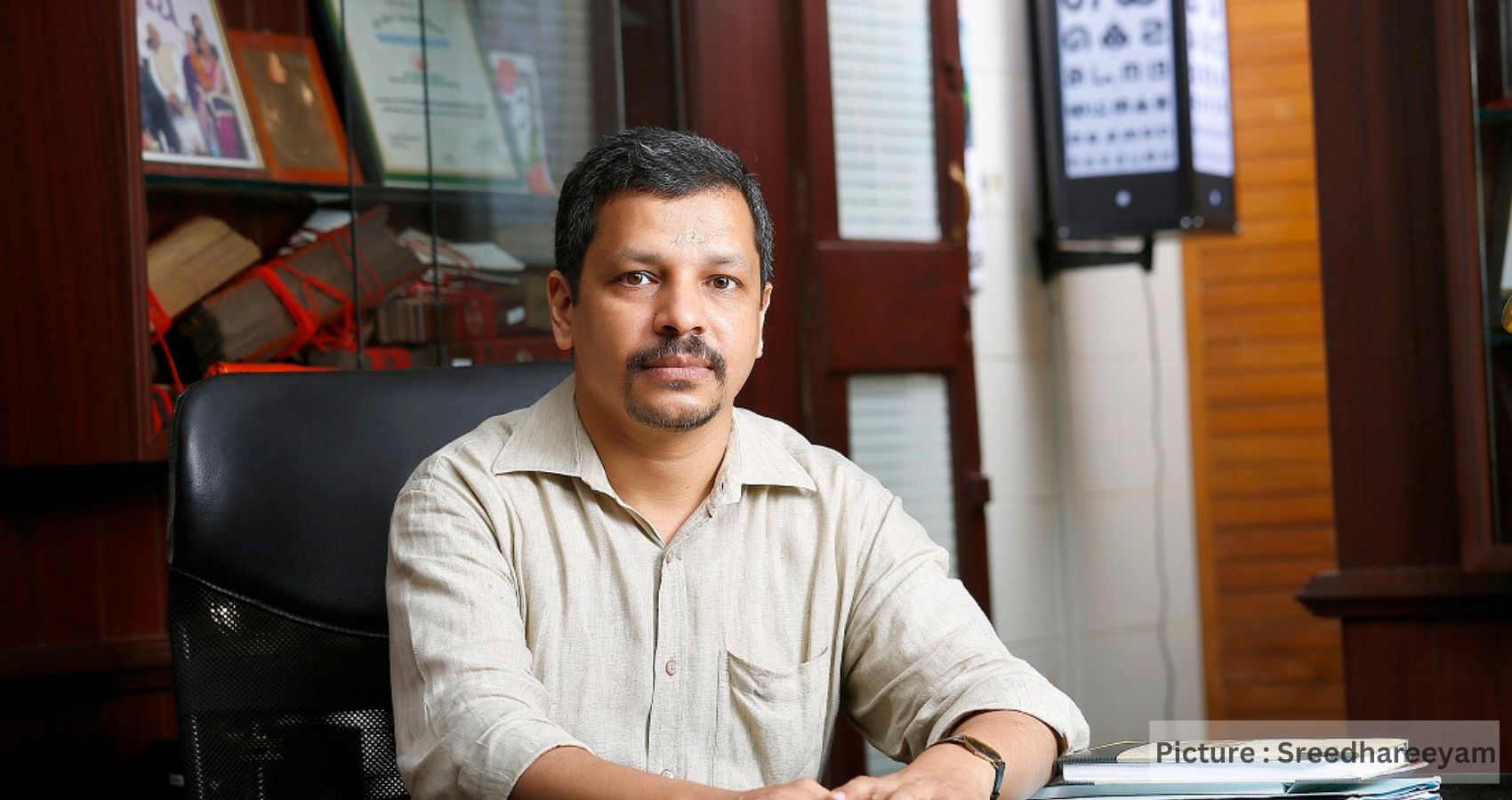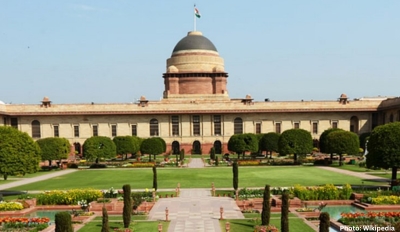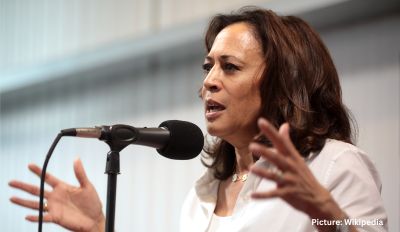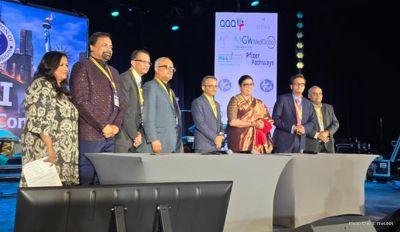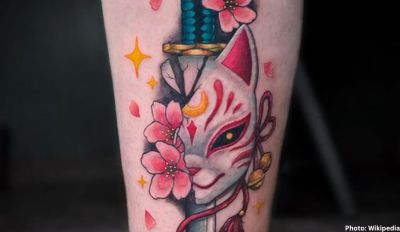Ayurveda, the science of life has brought true health and wellness to millions of individuals throughout the ages with simple changes in daily living practices.
This ancient art of healing has been practiced continuously for over 5,000 years. Ayurvedic practices restore the balance and harmony of the individual, resulting in self-healing, good health and longevity. Incorporating just a few of these proven methods into your lifestyle can bring about radical changes in your life.
The principles of many natural healing systems now familiar in the West, such as Homeopathy and Polarity Therapy, have their roots in Ayurveda. The understanding that we are all unique individuals enables Ayurveda to address not only specific health concerns but also offers explanation as to why one person responds differently th an another.
Ayurveda uses herbs and spices like basil, turmeric, garlic, ginger and aloe vera, as well as yoga exercises, to treat physical and psychological problems.
Interest in Ayurveda in the United States began in the 1970’s, largely as the result of efforts by the Maharishi Mahesh Yogi organization of Transcendental Meditation. Interest continued to grow as Indian physicians came to the United States in the 1980’s. Among these physicians were Dr. Vasant Lad, Dr. Sunil Joshi and Dr. B.D. Triguna.
In the late 1980’s Dr. Deepak Chopra wrote “Perfect Health”, his famous introductory book on Ayurveda for the general public. This opened the door of India ‘s ancient healing science for many Westerners. Furthermore, several American pioneers helped attract attention to Ayurveda and influence its growth.

They include Dr. David Frawley, of the American Institute of Vedic Studies, and Dr. Robert Svoboda, a Westerner who completed India ‘s BAMS program. As interest and awareness grew, training programs of various degrees emerged. In 1995, the California College of Ayurveda was founded and was the first State-approved practitioner training program in the United States .
The National Ayurvedic Medical Association is the major body in the United States representing the Ayurvedic profession. A non-profit association, it was founded in 1998 by four individuals: Dr. Marc Halpern, of the California College of Ayurveda, Wynn Werner, of the Ayurvedic Institute, Kumar Batra, and Cynthia Copple. Indians trained Ayurvedic physicians who come to the United States on a work visa or through immigration may practice Ayurveda within a allowable scope.
The interest in Ayurveda has grown steadilynin the past few decades, and many more people from across the world are seeking Ayurveda treatment in India and in the many facilities where they are being ofered. For too many, who have been “given up” by the Western medicine, the first choice of treatment, Ayurveda offers an “alternate” and several hundreds seek and find solutiomns to their physical and mental illnesses.
In December 2000, I was diagnosed with Uveitis with Vasculitis and peripheral neovascularization. After being treated with Prednisone, a steroid, upto 100 mg per day, though my vision had improved, it had inflicted several side-effects on my entire physical as well as mental health.
Later on, after several surgeries that included a cataract, laser-surgeries, and Vitrectomy, I decided to seek ayurvedic treatment at Sreedhareeyam Ayureda Gaveshana Kendram, an endeavor by Nellikattu Mana, a Namboodiri family with traditional experiences and talents in Ayurveda treatment especially in the treatment of eye diseases.
After undergoing a full three weeks of treatment for four times in two years at Sreedhareeyam, my vision had showed signs of improvement. The inflammation on the retina was substantially reduced and the damage to the optic nerve was contained, which I thought, was the biggest achievement of the treatment I received at Sreedhareeyam. The cataract on my left eye was healed without a surgery, although the pressure on my right remained elevated. Medical Superintendent at Sreedhareeyam, Dr. N P P Namboothiri, a famous eye physician and the mentor and guide to the hospital, helped me “restore” my vision. .
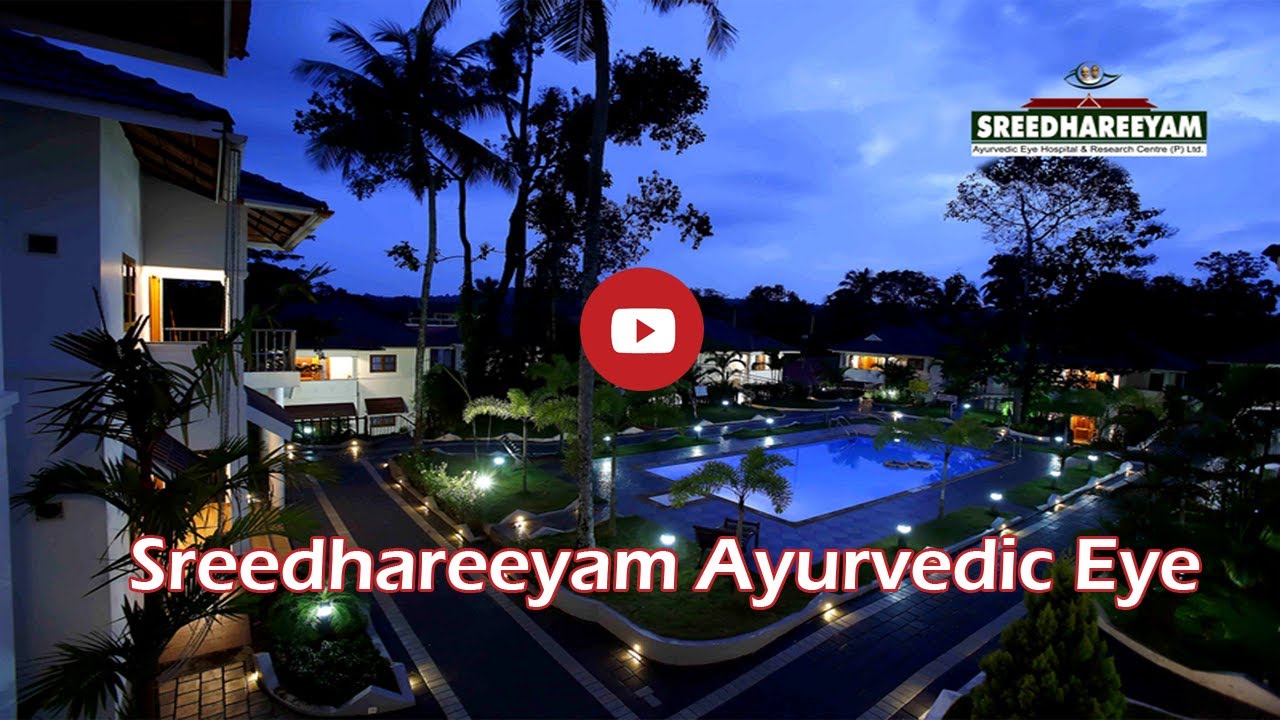
At Sreedhareeyam, where more than two dozen trained eye-specialists with degrees in Medicine, the primary focus has been on Ayurvedic treatments for all types of diseases.
However, specialized treatments are given for the various diseases affecting the positions above the neck. Most of the eye diseases, which have got no treatment in modern medicine, have been successfully treated here. People come here from all strata of society and from all corners of the world.
Most of the patients here at this nearly 200-bed hospital are those who have tried the regular Western medicines and have been given up as having no cure for their problems. Just like me, most of them choose to come here as the final resort, and hope that Sreedhareeyam is the answer to many of their eye diseases.
Aravind Kumar, a college student in Delaware, told this writer, “I was born with congenital cataracts in both eyes.” After six major eye operations that included surgeries to remove cataract as well as intra-ocular-lens implantation, he was was left with limited eyesight of about sixteen inches. “It was during the summer of 2003 that we made our first visit to India in several years, when we learned more about Ayurveda treatments specific to eyes and vision at Sreedhareeyam,” Aravinf recalls.
In November of 2004, his first ever treatments began. “A few days into the treatment, my first eye refraction exam was done. From five feet I was able to see three lines of text clearly. After ten more days a second eye refraction was done. This time, from six feet I could read almost five lines of text. I was amazed that, through Ayurveda and Sreedhareeyam, I was able to see more things far away,” this young boy from Allen Ttown, PA narrates. “My local Ophthalmologist in the US, who is renowned in the field of ophthalmology, was amazed to see the improvement in my vision.”
Restoring vision from birth defects is not a quick-fix. It takes time. Since 2004, he had gone back to Sreedhareeyam for five courses of treatments, each for a period of three to four weeks. “During each visit I have undergone treatments like Nasyam, Netra Dhara, Sirodhara, Pothichil, Tharpanam, etc.,” said Aravind, who went to Sreedhareeyam in Janauary 2008 for yet another phase of his treatment.
“I am experiencing dramatic results. Prior to the treatment, my peripheral vision was very poor and I had a tough time focusing. Now my peripheral vision is much better and I’m able to focus better. This has helped me immensely in my school work and day-to-day life. My astigmatism has been reduced, I am able to concentrate more than I used to and I can see things a little bit farther than I used to. My visits also gave me an opportunity to meet and talk to several visually under-previleged from across the globe, who come there with the hope for better vision. Most of them being tried and rejected by modern medicine.” Aravind tesxtifies, “Sreedhareeyam is truly the Ayurvedic hospital and they definitely live up to their motto of “vision for all”
Jayachandran, a 43-year-old male, originally from Bangalore, now living in Japan, told this writer, “I was diagnosed with Retinitis Pigmentosa, a rare hereditary disorder, which causes poor night vision and ever-narrowing field of vision beginning in childhood.”
About 12 years ago, he lost his vision completely and was declared blind. After being treated around the world for several years with no positive results, he heard about Sreedhareeyam, and came here about two years ago. “It’s my fifth visit in two years. I am beginning to see for the first time in 12 years,” Jayachandran said with a sense of joy and satisfaction. “The doctors here have been able to arrest the process of degeneration, and they have assured me that I can regain about 10 to 20 percent of my vision, which is great.”
Simran, 10 and Sonal, 12, two sisters from Sydney, Australia, were here for treatment for Retinitis Pigmentosa. Online search for treatment for this rare eye disease by their desperate parents brought them here at Sreedhareeyam. After four visits with a gap of three months between each visit, now the doctors at Sreedhareeyam have advised them to return to Sreedhareeyam after two years.
There was a sense of relief and inner joy on the face of the Mr. V. Goyal, the father of these two young kids, realizing that the process of degeneration has been arrested and their vision will be stable.
Ella Murugan is a 20-year-old boy from Salem, Tamil Nadu. He was diagnosed with Retinal Detachment, and was treated at the famous Sankara Netralaya in Chennai for more than three years. “After each surgery done on my eyes at Sankara Nethralaya, I began to lose my vision, and I became totally blind,” he said. “This is my fourth visit in less than two years, and now my eyes can see things and people around me, as though they are shadows.” He expressed confidence that in the near future, he will begin to see more clearly.
The story of Abdul, a 10-year-old boy from northern Kerala was heart-breaking. While playing with his friends, a sharp wooden stick pierced through his right eye, severely damaging his retina and the optic nerves, resulting in severe bleeding of the retina, thus leading to the loss of vision.
In December 2005, he was at Sreedhareeyam for his third hospitalization in 15 months. “Also, his bleeding on the retina has been contained,” his mother told this writer. “He has begun to see partially,” she added.
These are only a few of the hundreds of success stories one gets to witness during the stay from patients who come here for various eye diseases. “Results from the treatment here are the only publicity we do,” said, Narendran, Executive Director of Sreedhareeyam. “Our ever-increasing number of patients is a witness to the impact of the treatment patients receive here. Our publicity is by word-of-mouth only of these success stories.”
There have been a number of instances at Sreedhareeyam where success was found while it was only failure that the patients met with in other systems of medicine. According to Dr. N P P Namboodiri, its all miracles in the sense that all these helped manifest the capabilities of Ayurveda in an area of health care that needs specialization. A large number of such cases from the long history of the hospital stand testimony to the supremacy of Ayurveda system of medicine over other systems in treatment of eye diseases.
“At Sreedhareeyam, ours is a humble attempt to treat the disease and annihilate it through the way of nature,” says Dr. Narayanan Namboothiri, who treats patients from the same room in Naalukettu, where he was born. “Patients from all over the world come here for various eye diseases, including those suffering from Cataract, Glaucoma, Macular Degeneration, and Diabetic Retinopathy. We strive to give them our best, trusting in God’s power to heal them,” the gentle-speaking Dr. Narayanan Namboothiri says.
“At Sreedhareeyam, we strive to maintain and cultivate the hospital into a shrine of hope for hundreds of people who seeks cure from their various and mysterious ailments.
Fortunately, due to our long history of successes, we have an astounding number of patients coming in daily from the length and breadth of the country, seeking cure,” Dr. Namboodiri says.
“In the field of the treatment of eye diseases, we desire to rank ourselves from an international perspective. The history of the miraculous cures at Sreedhareeyam and our eminent panel of doctors proclaim our supremacy in this field. With all our expertise and resources, we foresee a wider dimension for our services to the society in the future,” the physician says with a sense of pride and hope. In the wake of the prevailing situation, Sreedhareeyam, according to Dr. Namboothiri, “aspires for a wider participation on a large scale in the battle to annihilate darkness of human eye from the face of earth.
All the treatments offered here are unique in the sense that the medicines used for all these treatments are produced at the Manufacturing Unit of the hospital. “The ingredients of the medicine as well as the treatment procedures are all according to those parchments (‘thaliyolas’) and ancient books (‘grandhas’), which counts among the traditional and precious assets owned by the Mana,” Dr. Narayanan Namboothiri, the young and dynamic physician, who heads the research unit of the hospital, says.
The research centre is studying several manuscripts on ayurveda, found all over the State and putting them in order. Medicines are grown in the Koothattukulam campus, where the ancestral home of the vaidyas. Medicines are also manufactured here under the supervision of Narayanan Namboothiri, the Chief Medical Officer of the hospital.
Experts predict that hundreds of herbs used for centuries by traditional healers in India could soon be on western pharmacy shelves. With 15,000 plant species, India is well placed to increase its share of the $75billion global market in medicinal plants, which is growing by at least 7% a year.
The Indian Council of Medical Research has launched a series of studies to test the health claims surrounding a variety traditional medicines. Clinical trials have shown that herbal remedies for asthma, diabetes and even sexually transmitted diseases may be effective. The council is looking at treatments for a range of other conditions used for over a thousand years by practitioners of Ayurveda and Siddha medicine.
Professor Ranjit Roy Chaudhury, a member of the council, said that in some cases the herbs may be more effective than Western-style medicines. “We have plants for bronchial asthma, hepatitis and arthritis,” he said. “We have other plants which have been shown to be effective for treating sexually transmitted diseases and they have been used in that way by tribal populations for centuries. We have herbs where you can relieve headache, fever, gastroenteritis, sneezing and coughing. These conditions can easily be alleviated.”
Professor Chaudhury acknowledged that in some cases the council will be unable to prove that the herbs work. This is because many of the remedies are based on a combination of plants which taken on their own would not be effective. “There are hundreds of herbs but we are unable at the moment to do very good testing for combinations of plants. “In the Ayurvedic system they use usually combinations. But testing combinations with modern technology is difficult.”
The world as a whole is switching over from chemical drugs to natural drugs because they are non-narcotic, they have no side-effects and are easily available. The world is interested in simpler and gentler therapies – especially for ageing, the problem of obesity, diabetes, neurological disorders, cardiac diseases and digestive problems.
Even as the ancient ayurveda science is becoming increasingly popular, it has encountered several hurdles too. Lack of funding for research has limited its growth and wider use. However, utilizing the available on going research, basing them on the ancient wisdom of the Rishis and Munis, and availing the few encouraging measures from the government of India,
The Ayurvedic profession is growing steadily in the United States of America, just as is in and around the world. Educational institutions are becoming more established and the Associations are working to give the profession a voice and address regulation issues. Ayurveda is likely to continue to grow in America and take its place among the other licensed health care professions.

